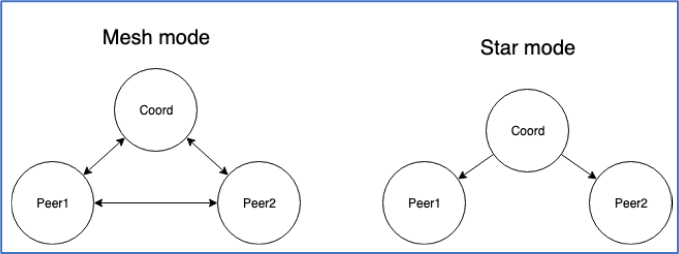Cluster establishes a secure and resilient connection with a set of Nodegrid devices. When enabled, a Nodegrid device that is part of the Cluster can access and manage other devices. By logging into any Nodegrid device, all devices in the Cluster can be reached with a single interface. This allows for vertical and horizontal scalability. 
There are two types of clustering topologies: 
Star
This is the default option. In a star configuration, one Nodegrid unit acts as the coordinator and central node. All other peers connect to the coordinator in a star formation. Only the coordinator has the list of all peers and attached devices within the configuration. This option allows centralized access and visibility from the coordinator Nodegrid device.
Mesh
In this configuration, one Nodegrid unit acts as the coordinator and all Nodegrid units (coordinator and peers) see each other (and all attached devices). This option allows for distributed access. Each unit keeps a list of all peers and attached devices and demands equal system resources of all devices. This configuration is recommended for clusters of less than 50 units.